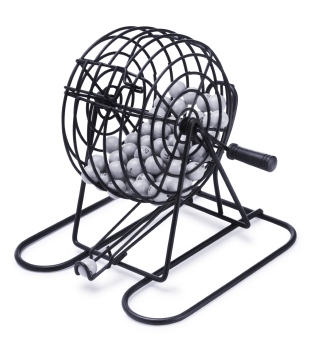Behind the Scenes: Programming at CrossFit 858
From time to time, we’ll pop the hood at CrossFit 858 to let you see how things work. Today, we’ll take a look at one of the pillars of the foundation of not just our gym, but of CrossFit: Programming.
But before we look at the programming, it’s best to define what exactly is CrossFit. CrossFit is defined as “Constantly Varied, Functional Movement, Performed at High Intensity” One of the key words mentioned in this phrase is “Varied”
What is the importance of variance? Variance in program allows for us as athletes to achieve physical competence in all ten fitness domains: Cardiovascular and Respiratory endurance, Stamina, Strength, Flexibility, Power, Speed, Coordination, Agility, Balance, and Accuracy.
What exactly does all this mean? It means we want to be good at everything, and not an expert or specialist at one thing. Take for example a world record marathon runner. The current record holder runs a full marathon in 2 hours, 3 minutes. This would mean his endurance and stamina would be off the charts high, while I’m willing to bet his Power and Strength are sub par. Would he have a 2x bodyweight back squat? Deadlift? Probably not. Now let’s look at the other side of the spectrum: the current deadlift record holder (1015lbs) would be hard pressed to run a 5K in under 36 minutes.
Now take a person who runs a 5 minute mile, but can deadlift 500lbs. That is a dangerous person. It’s someone who is both considered to be fast AND strong, good at it all. This what the CrossFit program shoots for.
The “hopper” or the “Bingo Cage”. The hopper is an object that exemplifies preparedness in CrossFit (technically referred to “GPP” or General Physical Preparedness): Imagine taking an exercise whether its a benchmark, a lift, a run distance etc and writing one down on each ball. You then randomly pick a ball and perform whatever is on it. The idea is to be able to perform anything and do it relatively well.
That “ready for anything” mentality and level of preparedness is what we program for. However, it is NOT how we program. I’ll say it differently: It is an end result but not a means to an end. We do not pull random exercises out of a hopper and just assign them to WODs, or days of exercise. As I stated above, our programming contains variance. Variance is not to be confused with randomness. There is a method behind the madness.
In basic programming, you break down all exercises into one of three categories: Monostructural (running, rowing, double unders), Weightlifting, and Gymnastics. Some days you will only have two movements or a couplet such as Pullups and Thrusters (did you shudder when you heard that?) or perhaps a triplet. Some days will have a multitude of movements in the form of a chipper or some days you will have weightlifting only days. CrossFit.com or “HQ” regularly has days consisting of a 7×1, or 7 sets of 1 rep days where you lift heavy with one movement. Some other basic components are: Are the workouts time based or task based? Is it an AMRAP or something done “For time”? Do you program back to back amraps? Or alternate task and time based WODs? Again, the idea is to have variance but be able to keep track and be aware of what exactly you are putting into the workouts without simply being random.
However, having a basic understanding of the categories is not enough. In more intricate depths of programming you have to consider the sub categories like which specific bodyweight movements have you used? How long are the workout target times? Less than 5 minutes? 5-10? 11-20? or 20 plus minutes? How many total reps is the workout? Under 50? Over 100? Is the lifting light weightlifting, medium, or heavy weightlifting? For example, we may have light deadlifts in a WOD on one day, the have a 5×3 heavy deadlift day on the next day. Why is that ok? What about putting a high volume of pushups in a metcon (aka metabolic conditioning WOD), after benching at the beginning of class? The answer is the stimulus of the entire body is different. That is the key to good programming. It’s the understanding of the response of the body to the exercise stimulus. Are you trying to improve the anaerobic threshold? Or are you trying to improve the raw strength, pulling or pushing power that week?
One of the trademark signs of bad programming is putting too much into a workout and doing it all the time. Throwing the kitchen sink at athletes will always run them into the ground and cause the infamous “sweat angels”, but it is not CrossFit. Anyone can program 50 Burpees, 50 cleans, 400m Run and 50 xyz, 50 blah blah blah, tire you out for 20 plus minutes, then repeat this every day. Too often people mistake sweating a lot and being out of breath as quality programming while it is just a glorified boot camp. As a coach, I see this type of activity during our Open Gyms, when athletes are searching for a workout to do, but are left with their imagination vs a solid training plan.
It is crucial to remember what is the end goal of the programming cycle. In CrossFit programming, there is programming with a bias and programming to a target. A bias is usually a “theme” of sorts, while targeting focuses on specific weaknesses. When programming for the masses, like say an entire gym, I prefer to have a programming bias. At CrossFit 858, we definitely have a strength bias in our programming. More often than not, you will be using a barbell during a workout. Some days, we have our strength days, with our “A1, A2” combinations. Some lift progressions we finish with a one rep max, some we don’t. There’s no right or wrong way of doing them. You may see the same movement in close time proximity to each other, but definitely not the same application. (going heavy two days in a row etc).
With all this said, I hope this blog gives you a little bit of a better understanding behind the science of our programming. Hopefully, now you will look at our programming in a different light, with more understanding. Instead of seeing “workouts” perhaps you will see “couplets” or “triplets” or strength days or even endurance/monostructural WODs. Maybe now you will pay closer attention to how long the amrap is, how long the average finish time is for that 5 round WOD, or how long the time cap is and think about why.
Again, what you will see throughout is the crucial level of variance (not randomness), that will allow you all to become better, well rounded athletes that are faster AND stronger versions of your previous self. THAT ultimately is our end goal.
If anybody has questions on this, please ask. I am always here to help.
-Mark




